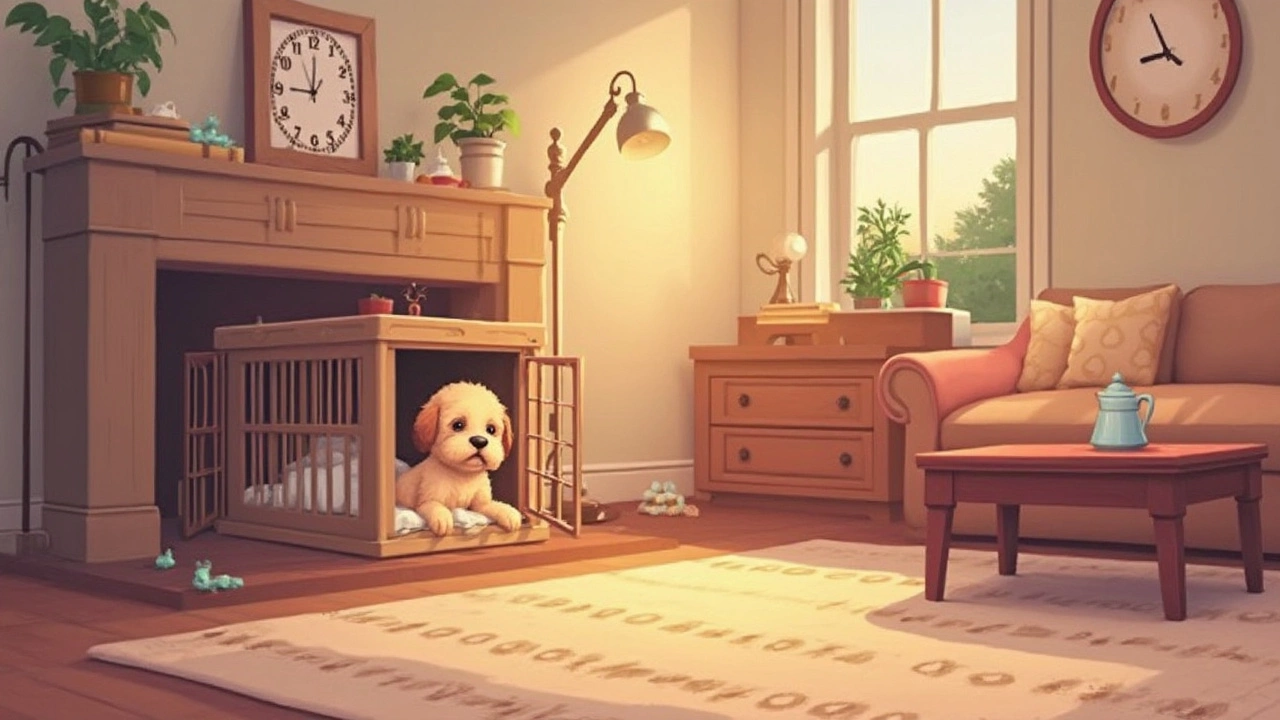Night Crate Puppy: Should You Cover Your Puppy’s Crate at Night?
When the lights go out, many puppy owners wonder whether a covered crate will make their pup feel safer or just trap heat. The short answer: it can be helpful, but only if you do it right. Below we break down why covering a crate might work, what to watch out for, and easy steps to set it up.
Why a Cover Can Be Good for Your Puppy
Most puppies love a dark, snug space. In the wild, a den is low‑light and enclosed, so a covered crate mimics that feeling. A cover can:
- Reduce visual distractions that keep a pup awake.
- Provide a gentle sense of security, especially for new arrivals.
- Help keep drafts out during colder nights.
If your puppy whines at bedtime or seems nervous when the house is quiet, a cover might calm them enough to settle faster.
Potential Risks and How to Avoid Them
Covering a crate isn’t a free pass to ignore safety. Here are the most common problems and quick fixes:
- Overheating: A thick blanket or plastic sheet can trap heat. Use a lightweight cotton cover and check the temperature with your hand – it should feel just a bit warm, not hot.
- Poor ventilation: Puppies need fresh air. Make sure the cover has a small opening or use a mesh crib blanket that lets air flow.
- Restricted movement: If the cover is too tight, your pup can’t get out if they need to use the bathroom. Choose a cover that slides on and off easily.
Testing the setup before bedtime saves a lot of panic later. Put the cover on, watch your puppy for five minutes, and make sure they can breathe comfortably and move a little.
Step‑by‑Step Guide to a Safe Night Cover
1. Pick the right material. A breathable cotton sheet, a small pet blanket, or a specially made crate cover works best. Avoid heavy blankets and plastic.
2. Measure your crate. Lay the material flat, fold it to match the crate’s height, and cut any excess. A snug fit without tightness is the goal.
3. Leave a ventilation gap. Cut a 2‑inch slit near the top of the cover or use a mesh panel. This lets fresh air in and keeps the crate from feeling stale.
4. Secure loosely. Tuck the edges under the crate or use light clips. The cover should stay in place but be easy to pull off in an emergency.
5. Test with a temperature check. Touch the cover – it should feel like a cool towel. If it’s warm, lift it for a minute and let the crate air out.
6. Observe the first night. Listen for heavy panting or restless movement. If you notice signs of distress, remove the cover and try a lighter option.
When to Skip the Cover
Not every puppy needs a cover. If your dog is a heavy breather, lives in a warm climate, or prefers open space, a cover may do more harm than good. Also, if your puppy is older than six months and is already comfortable sleeping alone, you can probably skip it.
Ultimately, the decision comes down to watching your pup’s behavior. Try a short cover test for a couple of nights, note any changes in sleep quality, and adjust as needed.
Covering a crate can turn a noisy, restless night into a calm, cozy one – as long as you keep safety first. Use a breathable material, allow airflow, and always check for overheating. Your puppy will thank you with deeper, quieter sleeps, and you’ll get a little extra peace of mind.
- Morgan Ainsworth
- 0 Comments
Should You Crate Your Puppy at Night?
Wondering if your puppy should sleep in a crate at night? Using a crate can be a practical way to train your puppy and keep them safe as they adjust to their new home. The crate mimics the cozy den of a wild canine. However, timing is key; you’ll need to consider your puppy’s age and comfort with the crate. Let's explore some facts and tips to help make the transition smooth for both you and your puppy.
View More
